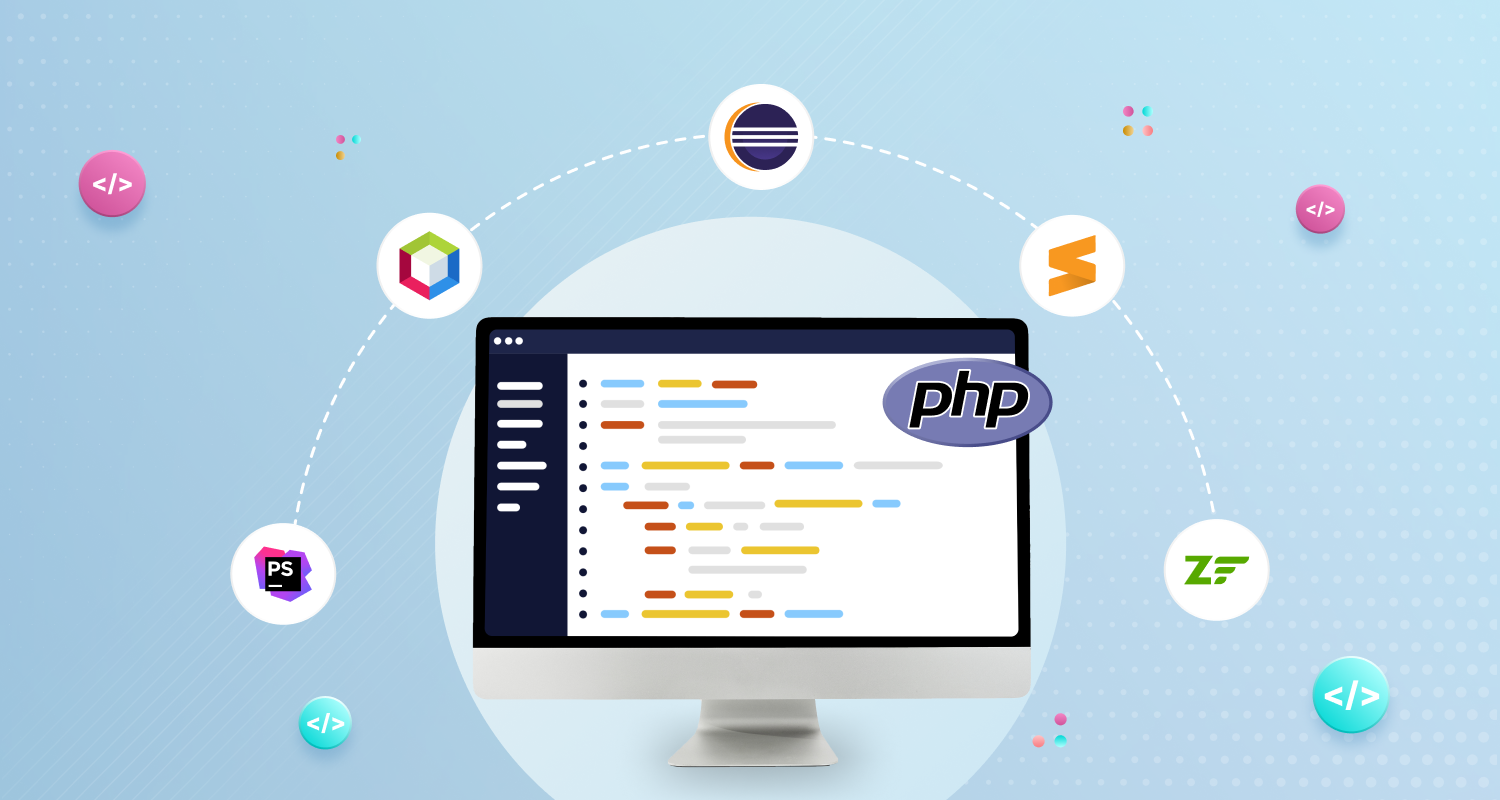Hypertext Preprocessor or PHP is an open-source scripting language that inserts within HTML and empowers web development. Contrary to placing vast commands over to output HTML, PHP consists of embedded HTML code. The user can leap in and out from the PHP mode with unique php and start and end processing instructions. Firms can Hire Dedicated PHP Developers to learn the benefits of using PHP over JavaScript.
The main specialty of PHP lies in the fact that the code execution takes place over the server. The generated HTML is sent to the client who will obtain the outcome from running that script. However, he or she will remain oblivious of the backend code. Configuration of the webserver for the processing of HTML files with PHP can keep the end-users ready for a surprise. Hypertext Preprocessor is simple to understand for newbies but also carries improved features for the professional programmer.
Variable Declaration in PHP
The variable in PHP is a name for the location of a memory that has data. The $ sign before a variable name helps in a variable declaration in PHP. A sequence of characters forms a string. A variable set consists of several numeric and string variables that can be placed within a set. It can come from several sets. The variable order within a set does not influence their display order within the dialog box variable lists or the Data Editor.
An array is a crucial PHP component as it helps to store, manage and operate the variable set. As a built-in PHP function, the key() function helps to return a particular array’s element index. The pointer is the object that stores the address of the memory. It references a memory location. Dereferencing a pointer indicates taking the value that is stored in the location.
The key() function returns an array element’s key which the internal pointer points at. However, the function fails to relocate the pointer. The key() function returns null if the internal pointer points over the elements list or array end.
An array associates values to keys in order. The language construct array() helps to create an array. The array can contain unspecified amounts of comma-separated keys. An integer is a number that lacks a fraction and consists of both positive and negative whole numbers. Integer arrays contain an integer (or whole number) set that aids in multiple processing operations. A string contains a sequence of characters. A string array consists of a set amount of String values.
Learn more: NodeJS vs PHP: Which is the Ideal Framework for Your Website Backend?
Characteristics of PHP 8.1
Let us discuss some of the characteristics among the Top PHP Frameworks i.e. PHP 8.1.
String-keyed Array Unpack
Users could use this feature only with integer-key arrays. They would face a fatal error if they used it with string-keyed arrays. However, this feature produces similar results like the PHP- version, string-keyed array “array_merge”.
The “IntlDatePatternGenerator” class in PHP 8.1can help ease the format localization and date internationalization. This class can help to identify the best suitable format for a particular locale. Placing the “getBestPattern” as the locale with the format-able “skeleton” can fetch the formatted locale date over the IntlDateFormatter request.
Enumeration
An enumeration enables the user to establish a set of value-irrelevant constant definitions. Since these constants are typed, the user has to pass nothing but the constant if a value is requested from the method argument and attribute. Enumerations can be helpful where value-irrelevant constants are used. However, if the values are important, the user can define constant values through backend enumeration by PHP. Thus, these enumerations can ascertain the developer that the code handler operates within a restricted set value.
Pure Intersection Type
RFC or Request For Comments is the IETF (Internet Engineering Task Force)’s formal document which includes interested party reviews and committee drafting. The final RFC version that can turn into an established Internet standard. Some of the RFCs have an informational characteristic. The Liskov Substitution Principle suggests that a class that is the derivative (or child) of its source (or parent) class must be useful in place of the source (parent) with no surprising behavior. An intersection type needs a value that can satisfy several different constraints than a single one. These enforced intersection types identify mistakes at an early stage. The “type” information has fewer chances of becoming miss-edge cases or outdated since they are enforced. The activation of the Liskov Substitution Principle enables one to keep a check on the type in times of inheritance.
The phpdoc or phpDocumentor is the documentation application that acts for PHP projects. Boilerplate includes writing forms that are used or reused several times by introducing the least content changes. It involves code that has its efficiency evidence and can spread to other applications. The RFC syntax is more phpdoc than boilerplate-y.
The pure intersection type RFC is yet to be selected but has a higher chance of implementation. Users can use pure intersection typing to request PHP for a pair or more interface implementation by the variable. Although the pure intersection type check is still possible on PHP yet, it requires an intermediary interface to execute the check.
Fibers
The blocks of code that the main code can initiate, pause, resume or end are called fibers. These fibers contain their state and variables. They help to simultaneously execute PHP code. However, the fibers do not execute parallel to the main thread even though they appear parallel and multi-threaded. Before PHP returns to the main code, instead of accessing the main block, it will execute the fiber code multiple times. The execution of the fiber at a specific time point lacks assurance. Consider a vast count of elements for instance. The main code block can number the elements. But, the fiber echoes the progression regularly. During certain intervals, PHP transitions to the fiber code block from the main code block for the execution of a procedure. It obtains the number of elements counted in the present and displays it on the screen. PHP will then return to the main code block which measures the elements.
“Never” Return Type
As the name suggests, the never return type method never returns anything either implicitly or explicitly. The “Never” return type ensures that the method always fails to reach its ultimate destination. However, in practice, the method needs to release an exception, called “die” or “exit”. The “never” return type must never be used over union types like the “never / string”.
CMARIX stands tall among the top PHP Development Company available.











